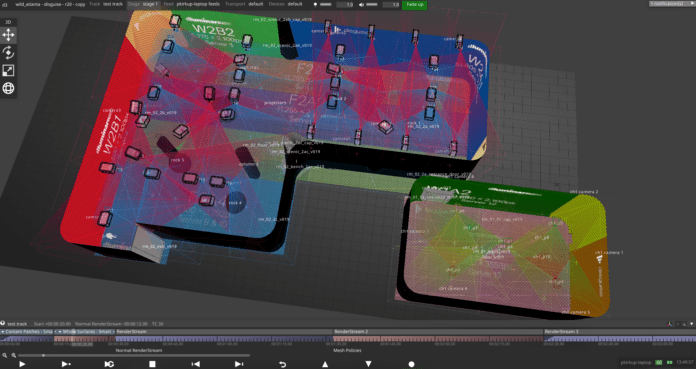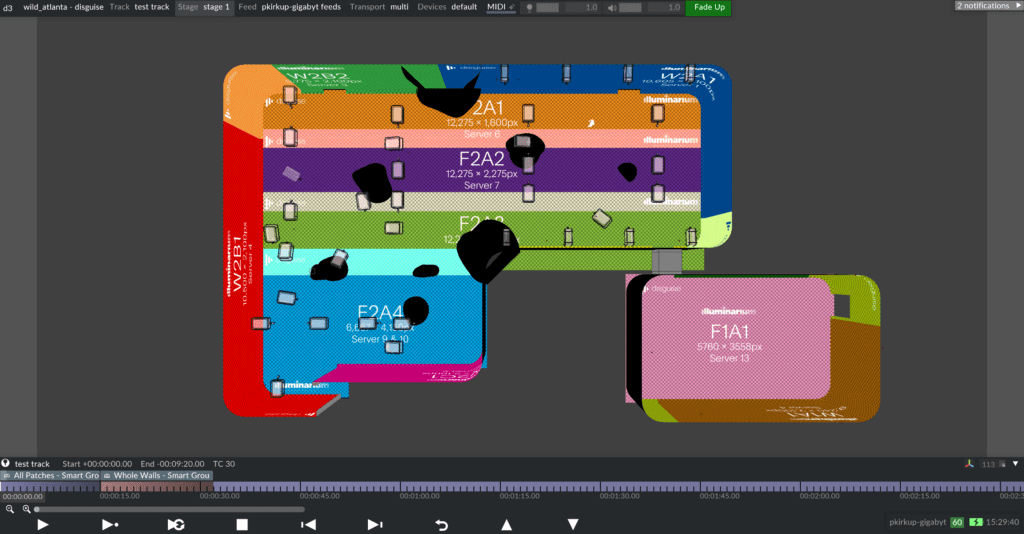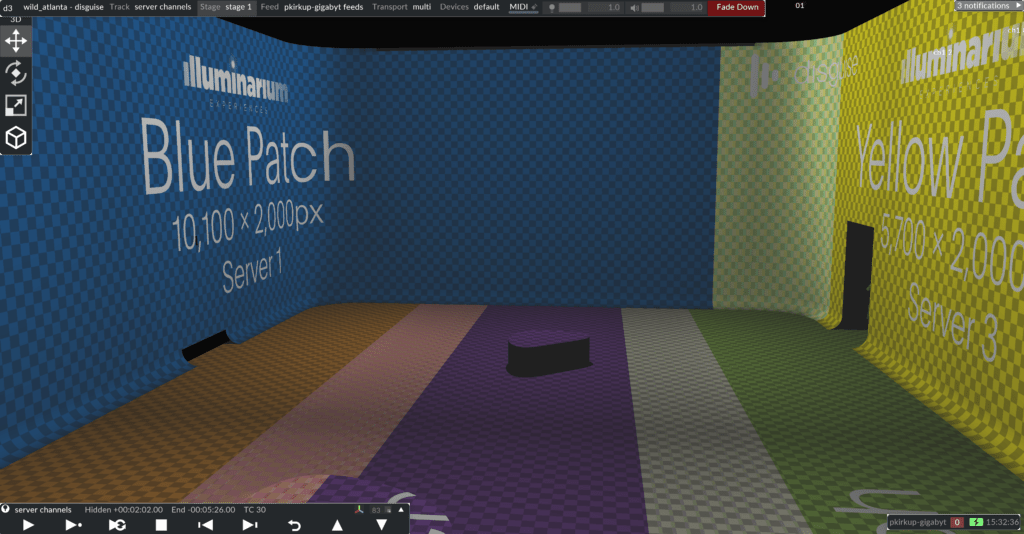disguise: a server platform that supports an end-to-end workflow
by David Paul Green
In themed entertainment, the need for media systems that can handle massive amounts of data, as well as manage the design and development process from start to finish, has grown. In response, London-based global company disguise created a fully integrated hardware and software platform that unifies the tool set, allowing the same system to be used from concept design through to implementation, or as disguise refers to it, “end-to-end.”
“It’s a pretty exciting space,” says Peter Kirkup, Solutions Director at disguise. We’ve got this 3D-accurate pixel simulation that we do within the software that’s really a critical part of the process. We’re not just about the control of the final output pixels to the projectors or LED screens — or whatever we’re connecting to — but also about the entire supporting workflow.”
He continues, “The cool thing about disguise is that the work that our clients put in to win the job is actually the technical setup of the project. They are front-loading the technical setup, so that when it comes to the delivery phase, 80% of the job is already done. They do not have to deal with setting up the system because that was already done months before when they were pitching and previsualizing and starting to validate content. Our software’s capability to pre-visualize and plan a project to perfection is why many of our clients choose to use disguise.”
It is this incorporation of the concept design tools into the development and implementation framework, along with its Apple-like total integration of hardware and software, that makes disguise’s platform so groundbreaking. Instead of each discipline within a project having its own set of tools, the disguise platform allows all the disciplines to work on the same data (design info), streamlining the project, and keeping the overall project vision from being lost in the process or going off the rails.
“The vision of disguise, with this end-to-end 3D pre-visualization through to delivery workflow, is that everyone should be able to work in our tool,” says Kirkup. “The designers can use it for pitching, for pre-vis, for working on concepts. The technicians can focus on pixel pitches and resolutions and lens selection, brightness, luminosity and more. Everything converges in that one tool. The data is being built up in the same project. As we get through to deployment, you can easily give key stakeholders visibility on the project. In particular, he noted, the system can be used to provide a 3D showcase of the project and get client sign-off on the design. “This is an enabling technology that allows you to sell as well as to deliver,” says Kirkup.
An example of this in practice is the new immersive walk-through experience, Illuminarium, which opened its flagship location in Atlanta, Georgia, in July 2021. Illuminarium currently features “WILD,” a projection-mapped African safari show, shot on multi-camera arrays. “There are 46 4K projectors running,” Kirkup says. “You have a full 360-degree surrounding periphery of content on the walls, and additional interactive content on the floor. It’s very, very rich in immersive content. They’re using 18 of our vx 4 servers to play out the video on all of those projectors and leveraging the OmniCal projection alignment tool to do all of the automated lineups of the projectors. We are definitely seeing a trend of systems getting larger and people getting more and more confident about the use of AV technology really as a seminal part of the experience.”
Modular scalable architecture underpins the development of disguise hardware and software so that, as the production grows and the scalability and the complexity get larger, its users can add more components as desired.
Despite the inherent complexity of such systems, disguise created its Designer software to create a seamless process. “The primary focus is what we call the stage,” Kirkup says, “which is our 3D render. Ninety percent of the time, what you are looking at is a 3D simulation of your event in front of you. That’s what you’re looking at when you’re compositing in our timeline, and adding layers in, and playing around and manipulating; you can see the impact live on a 3D model that shows you what that’s going to look like out on the real system. Then there are various other pop-up windows and things that you can bring up to deliver more specific jobs.”
With such trailblazing technology, disguise places an emphasis on product education. Kirkup says, “During COVID, we made a conscious decision to invest in and ramp up our training resources because our community, from the live event space especially, was suddenly left with fewer work opportunities. We launched an e-learning platform where all our training is available online in module form for free. We ran a lot of free webinars, created free training materials, and we even gave our Designer software away for free and continue to do so. This strategy was all about opening up the ecosystem and enabling people to design their own shows and build their own experiences with the right tools at their fingertips.”
“This is really about new capabilities for AV,” Kirkup concludes. “It’s not about us coming in as a competitor to existing stuff. We’re trying to do things differently. We’re trying to allow people to create what was previously thought of as the impossible!” • • •
For more info, see the disguise webinar “How to Create Infinitely Scalable Content” at
https://www2.disguise.one/disguise.webinar









